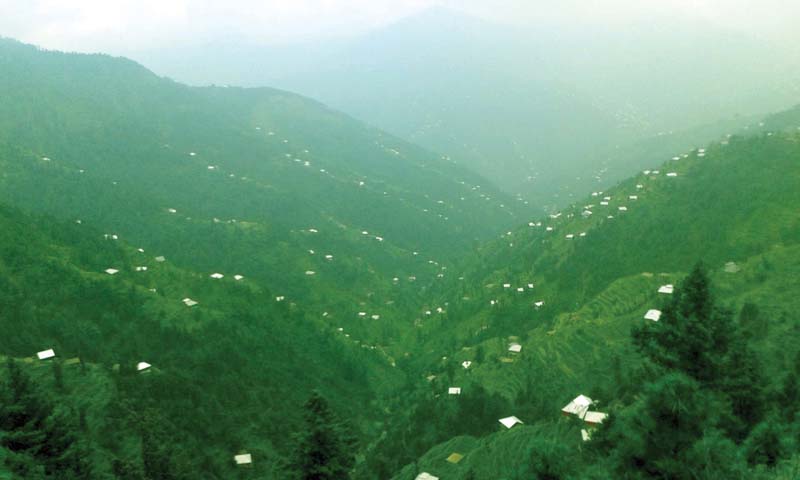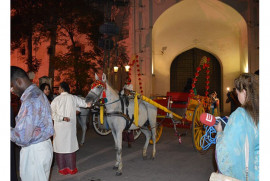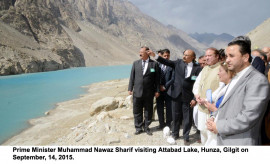
ALPURAI:
A spine-tingling ride starts from Lalonai union council as Zamarud Gul, the teenage driver, hits first gear and starts the roaring engine of his beastly four-wheeler. He lights a cigarette and smiles at his passenger, assuring him that the surprise visit from Alpurai to Jabba of Bassi Kas, one of the highest places in Shangla district was worth the bumpy ride.
Perilous journey
The road to Jabba, which is open only for four months when the snow melts, is extremely jagged and rough. Few people dare to make the journey to the beautiful mountain top since few jeeps make it that far. Zamarud said that he lost two of his vehicles to the mountainous terrain. “The road is so narrow that only one vehicle can pass through at a time and many drivers often return after going midway,” he said.
Zamarud, a resident of Jabba, is not simply a deep driver. He also serves as a tour guide and presses all those wanting to make the trip to the summit to take smaller jeeps and no luggage at all. “The vehicles need to be as light as they possibly can so that danger can be avoided,” he added.
Insaf Shah, another resident of Jabba, said locals prefer to walk for an entire day instead of taking a jeep. “The road is too rocky and most of the time drivers lose control of their vehicles and they slide into ravines,” he said.
Namoos Khan, a local farmer, owns three jeeps worth Rs0.3 million each that run from Lalonai to other villages in the mountainous areas. Namoos explained that he does not allow his drivers to run the vehicles to Jabba. “A month of driving up to Jabba means purchasing new sets of tyres at the end of the trip,” he said. “On the way to Jabba, drivers and visitors have to stop at least three times at Sulaimani Ghat, Kacharo Ghat and Sara Cheena to allow the engines to cool down.”

According to Namoos, only mules can travel peacefully on these trails. “I have seen horses lose their breath on these hiking trips,” he explained. Saffer Khan, another resident of the area, said, “If the government can find a way out to construct a proper road or at least make it safe from landslides, the influx of tourists will be hard to contain.”
Worth the risk?
The view from the peak is absolutely breathtaking. The snow-capped peak, variety of flora and fauna, arresting panorama, hospitable indigenous people and serenity of environs make the area definitely worth a trip.
The locals either migrate to areas with higher temperatures or grow corn and fruits to survive in the extreme cold. However, many people who belong to the fields of botany, zoology, forestry, fisheries, minerals and geology visit these areas and search for different plants, stones, trees and herbs.
Ghaffar Khan, another resident, said, “We are told that this area is rich in medicinal plants but I do not know much about them.” According to him, people pick a green mushroom-like plant called gunja, available in pre-monsoon season, and sell 250 grams of it for Rs30,000 in Shangla and Swat.
Published in The Express Tribune, September 15th, 2015.

















































COMMENTS
Comments are moderated and generally will be posted if they are on-topic and not abusive.
For more information, please see our Comments FAQ